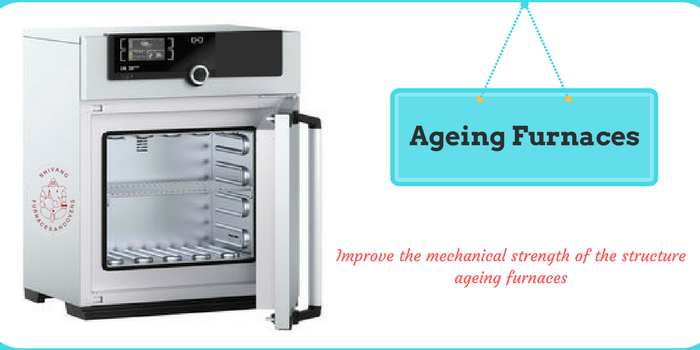<p style="text-align: justify;">An ageing furnace is the type of furnace used to age processed aluminum sections by heating them at a constant temperature to improve the mechanical strength of the structure. Ageing furnaces are available in many types depending on the type of fuel used (oil, coal, gas, electricity, etc.) and construction (single door, double door, skip manual, maneuvering). Some of the aluminum furnaces are semi-automatic, meaning they can be controlled by PLC systems with HMI.</p>
<p style="text-align: justify;">The utility of these furnaces is determined by their ability to age aluminum extrusions, conductors, aluminum casting, etc. with very close temperature tolerances.</p>
<p style="text-align: justify;"><strong>Following are the factors leading to the final output of the ageing furnaces:</strong></p>
<p style="text-align: justify;"><strong>Ageing process</strong></p>
<p style="text-align: justify;">The ageing furnaces help in artificial aging of various alloys like aluminum, steel, and other copper alloys. Their primary use is to age construction structures so that they settle down to a stable form that will withstand heavy weather conditions.</p>
<p style="text-align: justify;">This is a 3-step process in which the aluminum structure is first treated chemically, then aged artificially, and quenched for the final output. Ageing helps the aluminum to acquire the necessary strength and other properties like coercivity that are desirable when making aluminum equipment.</p>
<p style="text-align: justify;"><strong>Ageing temperature</strong></p>
<p style="text-align: justify;">It is very important to have the furnace temperature within the right range and in a uniform manner inside the body of the furnace. Typically a range of 260˚C to 600˚C is recommended depending on the type of aluminum structure to be subjected to ageing. A tolerance of +/- 15˚C is permitted after setting the furnace temperature. It is important to note that if there are temperature fluctuations or variance in different parts of the heating chamber, then the structure quality will be affected severely.</p>
<p><strong>Ageing treatment for metals other than aluminum that can be used for aluminum ageing</strong></p>
<p style="text-align: justify;">There are vacuum heat treatment furnaces available for ageing nickel. They perform tasks like olution heat treatment, solution annealing, precipitation hardening, artificial hardening, age hardening, artificial ageing and preheating. These furnaces can also be used for aluminum ageing, if the structure requires vacuum heating.</p>
<p style="text-align: justify;">Since nickel requires steady high temperature for stress relieving, the vacuum heat treatment ageing furnace can provide temperature up to 1400˚C.</p>
<p><strong>Industry implementation of ageing furnaces</strong></p>
<p style="text-align: justify;">Rather than standalone ageing furnaces, batch processing of aluminum structures is done with PLC chain implementations that are operated by control systems, and the heating is done in ageing furnaces (called ovens) after duly subjecting the aluminum structures to chemical solutions and quenching after the heating is done. These systems have temperature recorders to maintain quality records.</p>
<p style="text-align: justify;">The ageing furnace bodies are robust in design and made of mild steel lined with ceramic fiber to increase the heating efficiency. Temperature uniformity is maintained by hot boxes that circulate heated air inside the heating chamber.</p>
<p style="text-align: justify;">The sizes of these furnaces(ovens) are decided based on the aluminum structures that are processed in them.</p>
<p style="text-align: justify;">The whole set up – known as the ageing line – consists of a stacking system, automated basket handling system, and ovens for artificial aging. The basket loading can be automated or manual depending on the workforce available with the factory. The furnaces (ovens) can either be gas powered convective or coal/electric depending on the fuel availability in the region and the efficiency afforded by the type of fuel being used. The former type (gas powered) is generally preferred over other fuel types.</p>
<p style="text-align: justify;"><strong>Conclusion</strong></p>
<p style="text-align: justify;">Aluminum does age naturally too. However, it may take days or years on end to achieve the required amount of ageing at normal room temperature. Artificial ageing coupled with solution and quenching techniques can help speed up this process and significantly reduce the time required for production-level manufacturing of aluminum structures that are used in industry applications. PLC based ageing chains are the latest development in the field and are preferred over standalone ageing furnaces.</p>
<p style="text-align: justify;">Share your furnaces experience with <strong>ageing furnace manufacturers</strong> and get a custom solution of an ageing furnaces query.</p>

How To Implement Ageing Furnaces In Industries and Use It.
